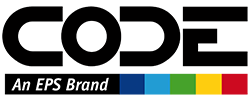Matthew Hess
CODE Author

Detailed Biography
Matthew Hess is a Microsoft MVP and software engineer from Albuquerque, NM. Matthew got his start programming using Borland’s Delphi IDE and has been working with C# and the .NET Framework since version 2. Matthew has developed software for many different industries from legal to financial services, to biotechnology, to non-profit. Matthew currently works for CG Infinity, a Dallas-based software consulting firm. His YouTube Channel, @CSharpAristan, is meant to help programmers of all levels become better at the craft of programming in C#.
Articles Authored
-
Sending Email with SendGrid
Last updated: Saturday, June 28, 2025
Published in: CODE Magazine: 2025 Jul/Aug
Matthew explores the advantages of using SendGrid for sending bulk emails, specifically in C# programming. He highlights the limitations of traditional methods, like SMTPClient and Mailkit, when dealing with a high volume of messages. Hess demonstrates the setup and utilization of SendGrid's REST API, focusing on its C# utility classes and personalizations feature, enabling efficient customization of emails for individual recipients. Additionally, he delves into template creation and management, showcasing SendGrid’s tools for crafting professional-quality email templates. Hess underscores SendGrid’s functionality in simplifying bulk email processes while avoiding issues related to SPAM filters and message limits.
-
Get on the Bus—The Azure Service Bus
Last updated: Tuesday, April 29, 2025
Published in: CODE Magazine: 2025 - May/June
Matt explores Microsoft's Azure Service Bus as a tool for creating scalable and flexible message-based architectures. Emphasizing the advantages of decoupling system components, he provides foundational techniques for configuring Azure Service Bus, including setting up namespaces and queues, and handling messages. He distinguishes between tightly coupled synchronous systems and loosely coupled, message-based systems, highlighting the benefits of decoupling such as independent scaling and enhanced flexibility. The article delves into the mechanics of sending and receiving messages, the use of heavy versus light messages, and error management techniques essential for creating robust message-based applications. Matt also covers the intricacies of receiver patterns, message serialization, and fault tolerance, guiding developers on best practices for building efficient and resilient applications with Azure Service Bus.



